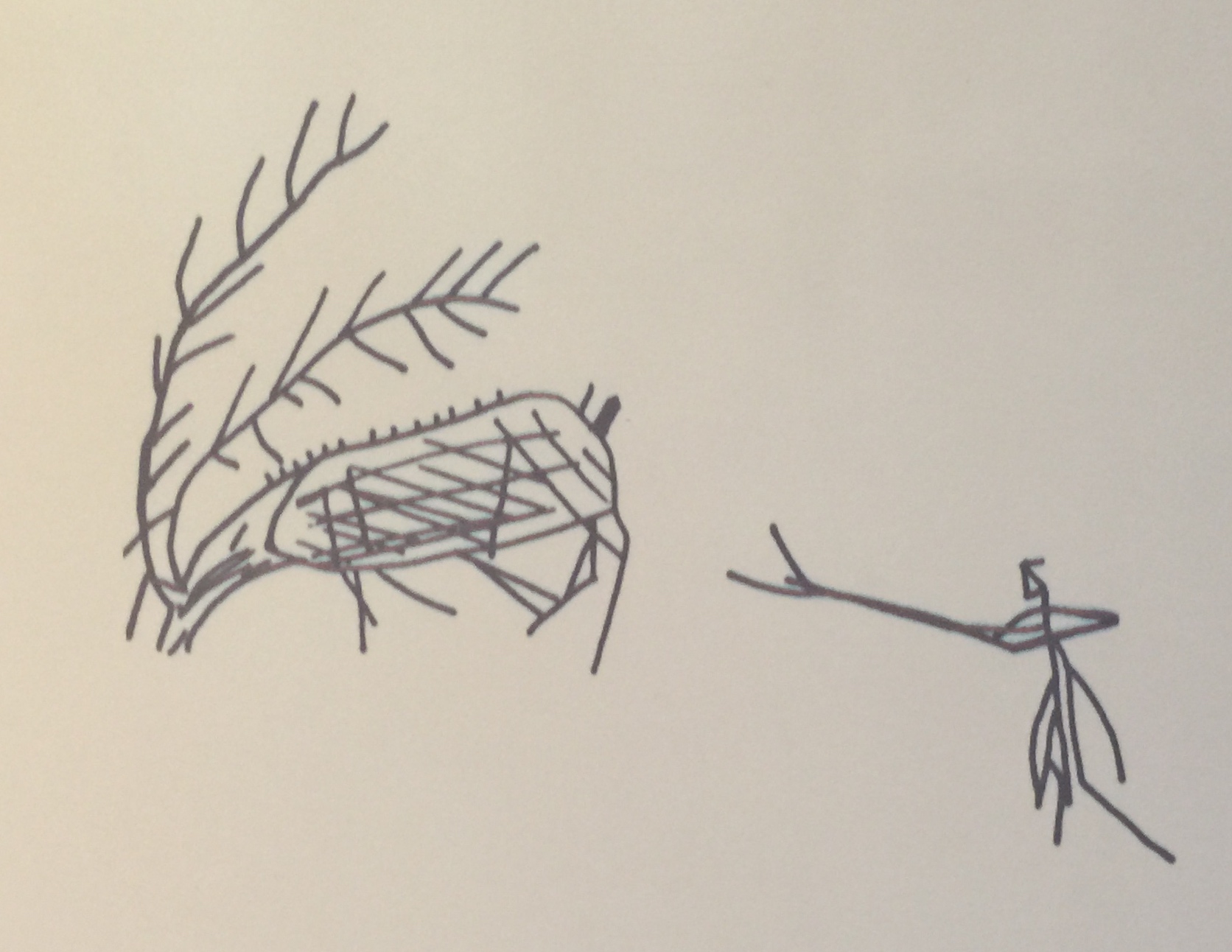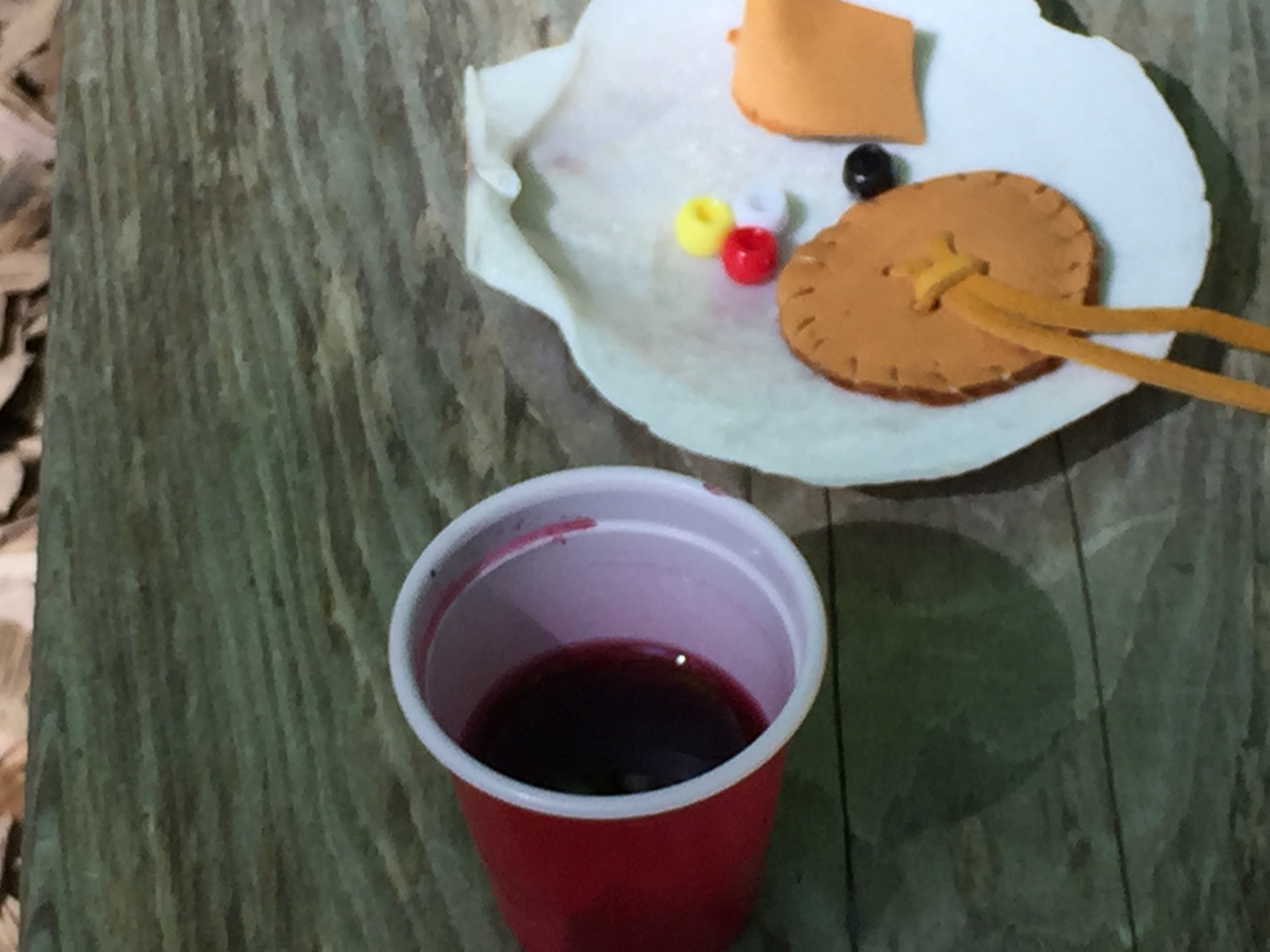At 2:30 in the morning, I was awakened by an owl. It was so loud, it sounded like a very large owl—perhaps it was just very close to my window. The sound was so unusual to my city-girl ears, and so repetitive, when I first awoke, I thought it was coyotes howling at the just-past-full moon, but the sound wasn’t the “yip, yip ,yip” of a coyote, it was deep, whirring, and rhythmic. “Wuhh, wuhh, whhhu, whhutowl! Wuhh, wuhh, whhhu, whhutowl!” After a bit of research I decided it was a Great Grey owl. I love sleeping in my motor home. I have a large window right next to the bed, to let in, or keep out the night sounds, and I’m glad it was open tonight!
Wow! I am so happy that I wrote about that when it happened, because it was like dream material—I had forgotten it completely, until I just now opened my Mac to write about the day. Perfect beginning to this day though…
I went out early this morning in search of a hiking map to the petroglyphs that I read were here, but the ranger in the booth told me that they can only be seen when you join a tour. I asked if there was a tour today, and there was. I got there early, and was welcomed into the group.
Nick was leading the tour, he is a local man, a member of the tribe: pronounced as, and is sometimes written as, “Mi’kmaw,” (aka Mi’kmaq, The Acadian First Nations, or AFN).
He told us of a team of archaeologists who were brought in to sample ten sites. Ten random squares, all over this area, and the islands. Seven out of the ten yielded many, many artifacts of his ancestors. The deeper the archeologists went, the more they found, and evolving forms, that indicated the same groups of people used these places for a very long time. They were able to trace them back something like 11,000 years.
Sadly, the petroglyphs we saw were in amongst more modern graffiti, as the site was unprotected until 1974 when the park was created. Today, it’s Kejimkujik National Park and National Historic Site, and protected by the Canadian Government.
The pictures that we were able to see on this tour were created four hundred to six hundred years ago. They were out on a spit of slate that had been compressed, and smoothed by the glacier, and eroded over time by the waves, snow, and ice. There are layers of names, symbols, and images scratched onto these rocks, but some were clearly done by the ancestors of The Aboriginal People. There are culturally significant images that repeat, the eight pointed star, hands, feet, faces, sailing ships, and the woman’s peaked cap—usually that was drawn larger than the other symbols, to show how important women were in the culture. They were the tribal leaders.
I’ve read about matriarchal cultures, but never experienced a living one. What was also very moving to me was the way this day unfolded, serendipitously to be my day of immersion in the Mi’kmaw culture. Nick had told us that if you met a person you didn’t know, you’d ask them who their mom was, who their grandmother was. That is how they keep track of family groups.
After the tour, I went to the Visitor’s Center to purchase some postcards of Petroglyphs to mail home, and as I was paying for them, the woman behind the counter suggested that perhaps I’d be interested in an afternoon workshop, “Connect with Mi’kmaw Culture.” I was certainly interested, and had no specific plans about doing anything else that day, so I was free to sign up, and show up at 2:PM over at the Merrymakedge Parking area.
It turned out to be a very small group, just five of us. Cherie, the leader, was a grandmother of these people: a position of social status, not just a family position. Interestingly enough, we spoke together of our children and our grandkids before the rest of the group arrived. In visiting this matrilineal people, it was way cool to be a grandmother among grandmothers. Very different from the youth/beauty/money culture where I live.
Cherie and Lukas were leading this introduction to their culture. It was not a scripted thing—rather, it was experiential. Cherie told us about the history of the people (L’na, “us,” or “one of us”). When questions came up, she answered them and then followed that train of thought, or area of interest. No Power Point here, not linear in the way I’ve been trained to think. We sat in a circle on low log benches around a fire, which was fishtailing all over in the breeze. Each of us spent some time being completely bathed in that smoke. The smoke and the circle are sacred, so a circular style of presentation made total sense. We got around to everything she meant to cover in that three hours.
The place where we met was, and still is a traditional encampment, with a birch bark tepee, drying/smoking racks, and some low tables where they had their things set out. Each member of the group was to take part in a ritual, make a craft, sing a song, and play a gourd shaker or these flapper-clacker thingies.
For the ritual, Cherie walked us all over to the lakeshore. She explained each of her four sacred herbs, or medicines. Tobacco, to make an offering or to thank Mother Earth for taking something of hers to use. Cherie hunts up north, only moose though, because that’s all she uses for food. And she would make an offering of tobacco to ask that the hunt was succesful, and if it was, she would then make another offering in thanks, and to give back. “You never take what belongs to Mother Earth without giving something back.”
Cedar, is used for protection, Sage to smudge and erase negativity, and Sweetgrass, for I forget what. I do remember though that sweetgrass grows where the freshwater meets saltwater, though.
She handed us each a pinch of tobacco and suggested that we could make an offering to mother earth, to the water, the sky, expressing thanks for whatever…it is very personal. We went off to do that on our own, and when we reconvened and she put a pinch of each of herfour medicines in an abalone shell, and with a fan made of two eagle feathers, “eagle because he flies highest, and passes closet to the creator, so can carry our prayers up there,” set into an antler handle, she wafted the smoke over herself and over us, we were instructed to, with cupped palms, scoop the smoke towards our face, towards our hearts and towards the (ground? Our root chakra, more likely.) We each did this, and afterwards, we moseyed back over to the circle, where Lukas had prepared fresh blueberry tea, and a bannock-bread-on-a-stick snack (their word for this bread is, “looseskinagin”). When the bread was cooked, they poured a bit of maple syrup in the cavity left by the stick. Yummers! So, we also had afternoon tea with the Mi’kmaw.
Cherie gave us each a small craft kit in a large scallop shell. Each one had four beads and two small circles of deer hide. We each made our brooch, or amulet out of the prepared materials, using leather needles—I never handled one of those before, they are sharp three ways, apparently. When we were mostly done sewing the leather, , Cherie came around and stuffed a tiny bit of cedar inside each one for protection. For me she really stchupped it in there, and said tit was to protect me on my journey. I was moved to tears. She was very kind to me, and I didn’t realize how lonely I was feeling until I felt all these emotions—making a heart connection like this with another person.
In my world at home, I have deep connection with a handful of friends and family. Out here on the road, I see people, chat with people, but no one knows me. No one senses if something is going on with me that maybe I need to talk about. This is a very different life I have put myself in for the space of one year.
When we played the music and sang the song, “My Heart is Happy”, transliterated for us on oak-tag as something like, “You way high ya a…” Cherie and Lukas played their frame drums. I was sitting there blissed out, trying to sing the song. Actually, I don’t even think I was shaking my gourd rattle very much, when Cherie walked over and honored me, by handing me her drum and striker, and asking me to play it! I was stunned. She also honored me by asking me to sing the fourth and final go-round of the song. Which, I think I made up my own sort of melody to…vamping off what we had been doing, but everyone followed along ok.
Y’know, the effort to “do it right,” took me a little away from my own experience. I ‘d like to be able to say that my heart was happy. I’d love to become comfortable enough in my body and soul to not spend so much energy observing, and judging myself, rather than to just be—being in the moment. That afternoon was magical, truly one of the high points of my life.
Afterwards, I went back to my rig to write, I thought about the way in which our culture treats mothering, like housework and grand-mothering, as this vast store of unpaid and mostly un-recognized labor. I am proud of the way I’ve shown up for my little family over the last 10 years. Going to work, and then driving to help out, or hang out with Alice and the kids. Making myself available for “babysitting,” now—more like hanging out with a bit of minor supervising. I have been able to have a relationship with that family in a way that is such a blessing. When Jack and Ted were little, I would show up there at four in the afternoon, they would shout and scream—loose their minds a little—run around in circles, as though some rock star had arrived! It was so lovely. And maybe, that’s all the recognition a grandmother really needs.
Image of the petroglyph of "The Woman's Peaked Cap."



















